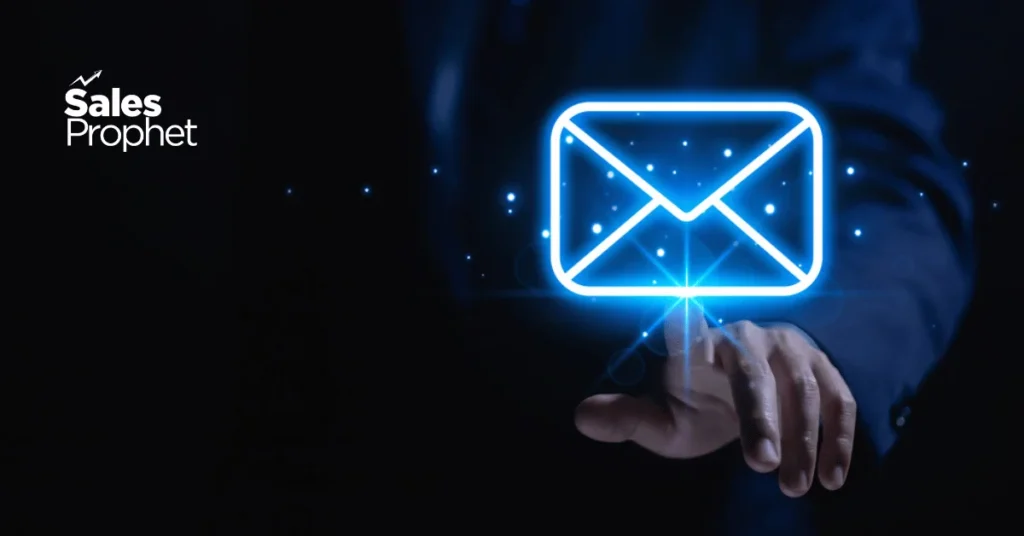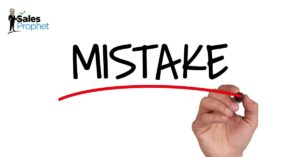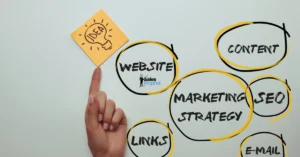Did you know that email marketing has an average ROI of 3800%? It’s no wonder that businesses of all sizes are leveraging this powerful tool to reach their target audience, nurture leads, and drive conversions. However, simply sending out a series of emails is not enough to guarantee success. To maximize the impact of your email marketing efforts, optimizing your email sequences using data-driven decisions is crucial.
In this article, we’ll delve into the world of email sequences and explore the best practices for creating and optimizing them to achieve maximum conversion rates. Follow these strategies and ensure your email sequences are highly engaging, personalized, and tailored to your specific audience.
Why Email Sequences Are Important
Email sequences, also known as email nurturing or automated emails, are a series of emails sent to a specific audience over a period of time. These sequences are designed to engage and nurture leads, build relationships, and ultimately drive conversions.
Nurture Leads and Build Relationships
Email sequences are a great way to nurture leads and build relationships with potential customers. By sending targeted and personalized emails, you can keep your brand in mind and provide valuable information to your audience. This helps to build trust and establish your business as an authority in your industry.
Drive Conversions
The ultimate goal of email sequences is to drive conversions. Increase the likelihood of conversions by providing valuable content and strategically guiding your audience through the sales funnel. This can include signing up for a free trial, buying a product or service, or taking other desired action.
Best Practices for Creating Email Sequences
Now that we understand the importance of email sequences let’s explore the best practices for creating them.
Define Your Goals and Audience
Before creating an email sequence, it is vital to take a few moments to consider and articulate your goals and audience carefully. By doing so, you will be able to clearly understand what you aim to achieve with your email sequence and who your intended recipients are. Ask yourself who you want to target, what you want to say, and what you expect to happen. This crucial step ensures you can develop a more focused and impactful email sequence that resonates with your target audience or ideal customer profile (ICP).
Your sequence’s performance is all about how relevant your messages are to your target audience. Remember to define your audience by persona. Can you find more on how to develop your personas here? This process is ultimately going to help you achieve your desired outcomes.
Personalize and Segment Your Emails
When it comes to email marketing, personalization is of utmost importance. Going beyond just a generic greeting and incorporating your audience’s name, you can create a sense of familiarity and connection with your recipients.
Furthermore, segmenting your email list based on various criteria such as demographics, firmographics, purchase history, or engagement level allows you to target specific groups of people with tailored content.
By understanding the unique interests and needs of each segment, you can deliver highly relevant and valuable content to them. This, in turn, enhances the overall user experience and significantly increases the chances of conversion.
Use a Clear Call-to-Action (CTA)
Every email in your sequence should have a clear call-to-action (CTA) because it is crucial for driving email engagement and maximizing conversion rates. This could be a button or link that directs the reader to take a specific action, such as clicking on a link or signing up for a free trial. Make sure your CTA is prominent and stands out in your email.
We like to break down CTA goals into two categories: response or action.
Response campaigns are designed to do one thing: generate a response. (good, bad or indifferent)
Action campaigns are designed to do one thing: get your target audience to take action, like downloading a whitepaper or registering for a webinar.
Here are some best practices for writing a clear CTA:
1. Use actionable language: Use solid and persuasive verbs to encourage the reader to take action. For example, instead of saying, “Click here,” use phrases like “Get started today” or “Claim your discount now.”
2. Keep it concise: Ensure your CTA is short and concise. Avoid using long sentences or excessive wording that might confuse or overwhelm the reader.
3. Create a sense of urgency: Encourage immediate action by using words that convey urgency, such as “limited time offer,” “exclusive deal,” or “act now.”
4. Make it visually appealing: Use design elements like buttons, contrasting colors, or bold fonts to make your CTA stand out. This helps draw the reader’s attention and increases their chances of clicking on it.
5. Place it strategically: Position your CTA where it is easily noticeable and accessible. Ideally, it should be above the fold (visible without scrolling) and placed in a prominent location within the email.
6. Align with the email content: Ensure your CTA is relevant to the email’s purpose and content. It should clearly indicate what action the reader should take and how it relates to their interests or needs.
7. Ask questions: While this might be obvious, if you are running a response campaign, ask a relevant question. Only ask one question. You dont want to confuse your audience by asking too many questions in the same email.
By following these best practices, you can effectively engage your email recipients and motivate them to take the desired action, ultimately increasing your email engagement and conversion rates.
Keep Your Emails Concise
In today’s fast-paced world, having an effective email strategy is crucial for businesses to engage their audience and drive conversions. One key aspect of optimizing your email strategy is keeping your emails concise and to the point. With people’s limited time and attention span, lengthy emails are often ignored or quickly dismissed.
To ensure maximum engagement, it’s important to make your emails easily digestible and visually appealing. Break up the text using bullet points, headings, and images. This makes the email more visually appealing, helps organize the content, and makes it easier to read.
Test and Refine Your Sequence
Once you have created your email sequence and implemented your email automation, testing and refining it continuously is essential to improve its effectiveness. A powerful strategy to achieve this is through A/B/C testing.
A/B/C testing involves creating multiple variations of your email sequence and analyzing which elements perform best regarding subject lines, content, and call-to-actions (CTAs). By sending different versions of your emails to a subset of your audience and measuring their responses, you can gather valuable insights that will allow you to optimize your sequence for maximum conversion.
When conducting A/B/C testing for subject lines, you can experiment with different wording, lengths, and personalization techniques. This will help you identify which subject line variations generate higher open rates and capture the recipients’ attention.
For the email content, you can test different writing styles, persuasive techniques, and the placement of crucial information. Assess each variation’s click-through rate (CTR), and you will learn which types of content resonate best with your audience and drive them to take action.
Additionally, it’s crucial to optimize the effectiveness of your CTAs. Test different designs, placement options, and wording variations to discover which drive the highest conversion rates. Monitor the conversion rate for each CTA variation to determine which strategies effectively lead your audience to take the desired actions.
Throughout the A/B/C testing process, it’s essential to focus on only one variable at a time to accurately isolate its impact on the email sequence’s performance. This systematic approach will provide actionable data that can be used to refine and enhance your email automation strategy.
The insights gained from A/B/C testing will guide you in making data-driven decisions to optimize your email sequence for maximum conversion. Refining your sequence based on actual audience responses will lead to improved engagement, higher conversion rates, and ultimately, a more successful email automation strategy.
Best Email Sequences for Sales
Now that we’ve covered the best practices for creating email sequences let’s explore the best email sequences for sales.
Introduction Sequence
An introduction sequence is the first email sequence you should create and an essential component of the best sales email sequences. The initial touchpoint is to introduce you and your brand to new prospects and make a positive first impression.
To create a compelling introduction sequence, consider including the following key elements:
- Introduction Email: The first email in the sequence should warmly introduce yourself and your company to new prospects. Use this opportunity to provide an overview of your offerings, value propositions, and why they should care. Test variations of your introduction email that include a list of customers you have worked with and the results your solutions provide. This will set the tone for future communications.
- Personalize this email by highlighting the benefits and value they will receive as customers. Ensure to include links to relevant content to help build your or your company’s credibility. Think about being a helpful thought leader when writing these emails.
- Brief Overview of Your Brand: In one of the sequence emails, provide a concise and compelling overview of your brand. Highlight what makes your products or services unique and explain how they can address your target audience’s needs or pain points. This brief introduction will give subscribers a better understanding of your brand’s offerings and benefits.
Nurturing Sequence
The nurturing sequence in email marketing is a powerful tool for engaging and converting leads. As a part of your email marketing strategy, the nurturing sequence focuses on building relationships and guiding your audience towards taking desired actions.
By providing valuable and relevant content, such as blog posts, case studies, and webinars, you can help your audience get to know your brand, establish trust, and ultimately drive conversions.
The key objective of the nurturing sequence is to keep your leads engaged and interested in your offerings. This sequence allows you to deliver targeted content that addresses their pain points and provides solutions. You must consistently provide value to keep nurturing the relationship with your leads. This will position yourself as a trusted authority in your industry.
To maximize the effectiveness of your nurturing sequence, it’s essential to include a clear call-to-action (CTA) in each email. The CTA encourages your leads to take the next step, whether it’s making a purchase, signing up for a demo, or requesting more information. This strategically placed CTA acts as a guide, gently directing your leads toward a conversion.
Sales Sequence
To have an effective sales campaign, it’s critical to implement effective email marketing sequences. These sequences allow you to make a persuasive pitch and convert prospects into leads and, hopefully, loyal customers. These sales campaigns involve carefully crafted emails highlighting the benefits of your product or service, addressing common objections, and providing social proof.
When creating your sales sequence, it’s essential to strike a balance between being persuasive and not being too pushy. Your goal is to showcase the value and benefits of your offerings compellingly without overwhelming or turning off your leads.
Here are some key elements to consider in your sales sequence:
- Highlight Benefits: Clearly communicate your product or service’s unique selling points and advantages. Show how it can solve your leads’ problems or address their needs. Focus on its value and how it can improve their lives or businesses.
- Address Objections: Anticipate and address common objections or concerns your leads might have. This helps build trust and reassurance by proactively providing answers and addressing any hesitations. Addressing objections head-on may alleviate any doubts and increase the chances of conversion. We recommend creating a persona for a typical Blocker. These people commonly raise objections to either changing solutions or questioning why the company is making a change at all.
- Provide Social Proof: Incorporate social proof through testimonials, reviews, case studies, or success stories. You are demonstrating that others have benefited from your product or service, which builds credibility and trust. This social proof shows that your offerings have helped others and can also help your leads.
- Personalization and Segmentation: By now, you should have broken down your lists into personas to address each persona’s specific concerns. Remember that an end user of your product vs. a decision maker or financial authority has unique and different questions and concerns. One message to all personas doesn’t work. Your email campaigns should address the concerns of each person involved in the buying process.
Use data and insights to personalize the content and make it more relevant to each persona. A personalized approach demonstrates that you understand their specific challenges and are offering a solution that is tailored to them. - Clear Call-to-Action (CTA): Each email in your sales sequence should include a clear and compelling call-to-action (CTA). This CTA guides your leads toward the desired action, such as purchasing, booking a consultation, or starting a free trial. Ensure your CTA is prominent and stands out in the email, making it easy for your leads to take the next step.
Re-engagement Sequence
The re-engagement sequence is another crucial component of effective email sequences. It is specifically designed to win back inactive prospects or subscribers and reignite their interest in your brand. This sequence includes a series of emails strategically crafted to remind prospects of the value you provide and encourage them to take action.
In the re-engagement sequence, it is essential to remind them of the benefits they can receive by engaging with your brand once again. This can be achieved by highlighting new features, products, or services or showcasing recent success stories or customer testimonials. The goal is to reignite their interest and remind them of the value they can gain from being active customers or community members.
To entice inactive prospects to take action, consider offering them exclusive incentives such as a discount, free trial, or limited-time offer. This can be a powerful motivator to re-engage with your brand and give them a reason to act.
Craft each email in the re-engagement sequence with care, ensuring that the messaging is relevant, compelling, and speaks directly to the needs and interests of the recipient. Use personalized content and subject lines to grab their attention and create a sense of urgency.
Ultimately, the objective of the re-engagement sequence is to remind inactive subscribers of the value you provide, re-establish a connection, and encourage them to take action. By nurturing and re-engaging these prospects, you can turn them into active, loyal customers.
Using Data to Optimize Your Email Sequences
Data is crucial when optimizing your email sequences for maximum conversion. Here are some key metrics to track and use to make data-driven decisions.
Open Rate
When evaluating the performance of your email sequences, one of the most crucial metrics to consider is the open rate. The open rate reflects the percentage of prospects or subscribers who open your email. Monitoring this metric is vital as it provides insights into the effectiveness of your subject lines and helps you gauge the engagement level of your audience.
Remember, subject lines impact open rates.
A low open rate can indicate that your subject line may need to be more compelling or that your emails are not reaching the intended audience. Utilizing A/B/C testing is highly recommended to optimize your open rates and increase the success of your email sequences. A/B/C testing allows you to create multiple variations of your subject lines and compare their performance to identify the most impactful ones.
Let’s take a closer look at some vital statistics and insights related to open rates:
- Average Open Rate: According to various industry reports, the average open rate across different sectors and audiences ranges from 15% to 25%. However, it’s important to note that open rates can vary based on various factors such as industry, audience demographics, subject lines, sender reputation, and deliverability.
- Industry Benchmarks: Different industries have varying benchmarks for open rates. For example, industries like publishing and media tend to have higher average open rates, while sectors like finance or manufacturing may experience lower average open rates. It’s essential to consider industry-specific benchmarks when evaluating the success of your email sequences. Remember that the persona you are trying to reach may be in front of their computer more often than others.
- Audience Segmentation: Segmenting your audience based on demographics, interests, or purchase history can help improve open rates. By sending tailored emails to specific segments, you increase relevance and personalization, leading to higher open rates.
- A/B/C Testing Impact: Testing your subject lines, you will notice significantly different open rates for various reasons. By comparing different variations, you can identify which subject lines resonate the most with your audience. Small changes in wording, tone, or length can substantially affect open rates, especially for the 46% of people who open their emails on mobile phones where the subject line gets truncated after 60 characters.
- Subject Line Best Practices: Crafting captivating subject lines is essential for driving higher open rates. Consider using personalization, creating a sense of urgency or curiosity, and being concise and clear. Subject lines that are specific and relevant to the email content perform better. Never mislead a prospect with a subject line unrelated to your topic.
By leveraging A/B/C testing techniques and analyzing open rate statistics, you can gain valuable insights and make informed adjustments to optimize your email sequences.
Click-Through Rate (CTR)
The click-through rate (CTR) is a key metric that measures the percentage of prospects or subscribers who click on a link or call-to-action (CTA) in your email. It is a valuable measure of the engagement and effectiveness of your email sequences and body copy.
Remember, body copy and CTA’s generate clicks and responses.
If your CTR is low, it could indicate that your email content lacks relevance or the offer is weak.
Remember, a lazy offer is no offer at all.
A special offer must be compelling to increase responses or click-through rates. If your offer isn’t much of an offer or is perceived as having low value, expect low responses and CTRs.
Low CTA rates prove your messaging or offer needs to be more compelling or relevant.
The key takeaway is to test different offers to determine what works best.
Ask yourself, what would get you to take action? If the offer isn’t compelling to you, what makes you think it’s completing to a prospect?
To improve your email performance and increase your CTR, conducting A/B/C testing is highly recommended. Testing involves creating multiple variations of your email content and CTAs and comparing their performance to identify which options generate better results.
For example, let’s say you create two variations of an email with different CTAs: one encourages subscribers to “Learn More” while the other prompts them to “Get Started Now.” By tracking the click-through rates of each variation, you can determine which CTA is more effective in driving engagement and conversions.
Here are some key insights and statistics related to click-through rates:
- Average Click-Through Rate: The average click-through rate varies across different industries, ranging from 0.5% to 5%. However, it’s important to note that audience demographics, industry norms, and the quality of your email content influence click-through rates.
- A/B/C Testing Impact: Testing allows you to compare and analyze the performance of different email variations. By testing additional content, layout, and CTAs, you can identify the most engaging combinations that result in higher click-through rates.
- Personalization and Relevance: Personalizing your email content and aligning it with the interests and preferences of your audience can significantly improve click-through rates. Tailor your CTAs to specific audience segments and ensure they are relevant to the email content.
- Clarity and Visibility: Make your CTAs visually appealing and easy to find within the email. Use contrasting colors, appropriate sizing, and clear, action-oriented language to attract attention and encourage clicks.
- Mobile Optimization: With the increasing use of mobile devices, optimizing your emails for mobile responsiveness is crucial. Ensure that your email design and CTAs are mobile-friendly, allowing subscribers to interact and click through on their smartphones or tablets easily.
Conversion Rate
When evaluating the effectiveness of your email sales sequences or lead nurturing sequences, one of the most critical metrics to consider is the conversion rate. The conversion rate measures the percentage of prospects or subscribers who take the desired action, such as making a purchase, signing up for a service, or completing a form. Monitoring and improving your conversion rate is essential for driving successful email marketing campaigns.
A low conversion rate could signify that your email content lacks persuasiveness, your CTAs need to be more compelling, or there may be issues with your overall email sequence strategy. To optimize your conversion rate and maximize the impact of your email sequences, it is recommended to conduct A/B/C testing.
Testing allows you to create multiple variations of your email content and CTAs and compare their performance to determine which options generate better results. Analyzing the data obtained through testing allows you to make data-driven decisions and implement adjustments to improve your conversion rates.
Let’s look at some vital statistics and insights related to conversion rates:
- Average Conversion Rate: The average conversion rate can vary across industries, and specific actions prospects or subscribers take. Conversion rates can range from .05% to 5%, depending on factors such as the complexity of the desired action and the value proposition offered.
- Testing Impact: A/B/C testing enables you to compare and analyze the performance of different email variations. By testing additional content, CTAs, and overall email sequences, you can identify the most effective combinations that lead to higher conversion rates.
- Content and CTAs: It is crucial to create persuasive and engaging email content that clearly communicates the benefits and value of your offerings. Additionally, your CTAs should be compelling and clearly guide your audience toward the desired action.
- Personalization and Segmentation: Personalizing email content and tailoring CTAs to specific segments of your audience can increase the relevance and effectiveness of your email sequences, thereby improving conversion rates. As an example, you wouldn’t send an email to an end user about the financial terms and conditions or ROI of your product or service. The only thing an end user cares about why is your solution better than what they are currently doing today and how easy is to learn.
- Targeted Landing Pages: Ensure that the landing pages you direct your prospects and subscribers to align with your email content and CTAs. A cohesive user experience and consistent messaging between emails and landing pages can positively influence conversion rates.
By leveraging A/B/C testing and analyzing conversion rate data, you can gain insights into what drives subscriber actions, refine your email content and CTAs, and optimize your email sequences to enhance your conversion rates.
Takeaways
Email sequences have proven to be highly effective in engaging leads, nurturing relationships, and driving conversions. According to industry research, companies that use email sequences as part of their marketing strategy experience higher conversion rates than those that rely solely on individual email campaigns.
Studies have shown that email sequences can improve conversion rates by 20% or more compared to single emails. By sending a series of strategically crafted emails, you can guide your leads through the sales funnel, build trust, and increase the likelihood of conversions.




